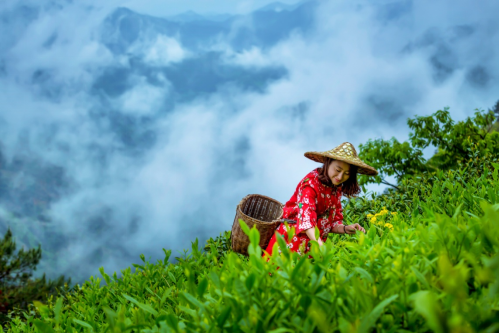Editor's note: The moist clouds that ring Huangshan Mountain – with an area of 160 square kilometers in Anhui province – are believed to form a natural layer of shelter, blocking the sunlight and allowing the tea leaves cultivated there to produce more nitrogen content and that gives them their distinctive aroma.
As a result, the celebrated Huangshan Maofeng, Taiping Houkui and Qimen Black Tea produced in Huangshan have won worldwide popularity. They were also added on Nov 29 to the Representative List of the Intangible Cultural Heritage of Humanity compiled by the United Nations Educational, Scientific and Cultural Organization.

A woman picks Huangshan Maofeng, one of the most pricey and sought-after teas grown in Huangshan. [Photo/WeChat ID: gh_fddd8e6b4139]
Huangshan Maofeng, which literally means fuzz tip from Huangshan Mountain, is one of the most pricey and sought-after green tea varieties in China.
Fuxi, a small town in the southern part of the Huangshan city in Anhui, is widely believed to be the birthplace of the tender, needle-like tea.
Wu Weiguo, a local tea expert who has been studying the cultivation and history of the tea variety for nearly three decades, attributes the charm of the drink, which features a subtle floral tone, to its ecology rather than its processing technique.
That's why the tea can be only labeled as Huangshan Maofeng when its raw leaves are produced in the region, regardless of how they are picked, baked or dried.





